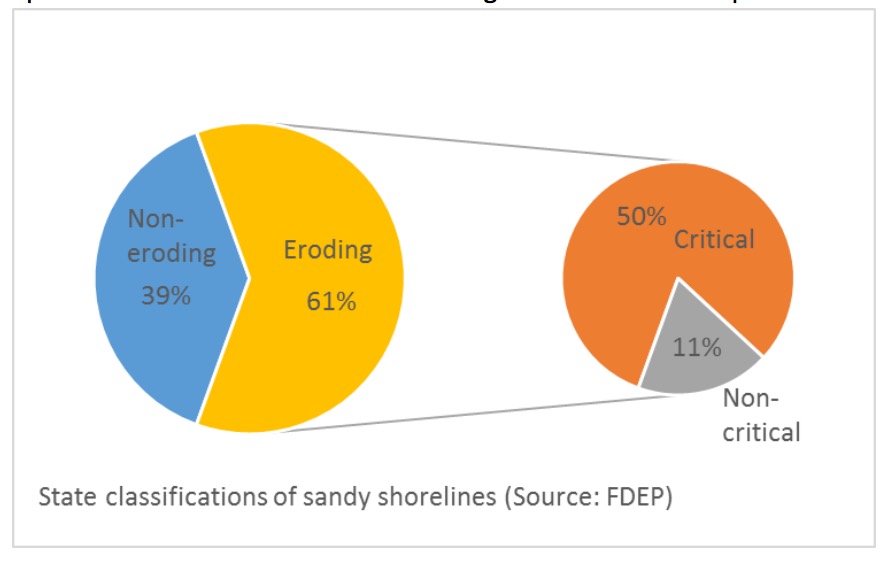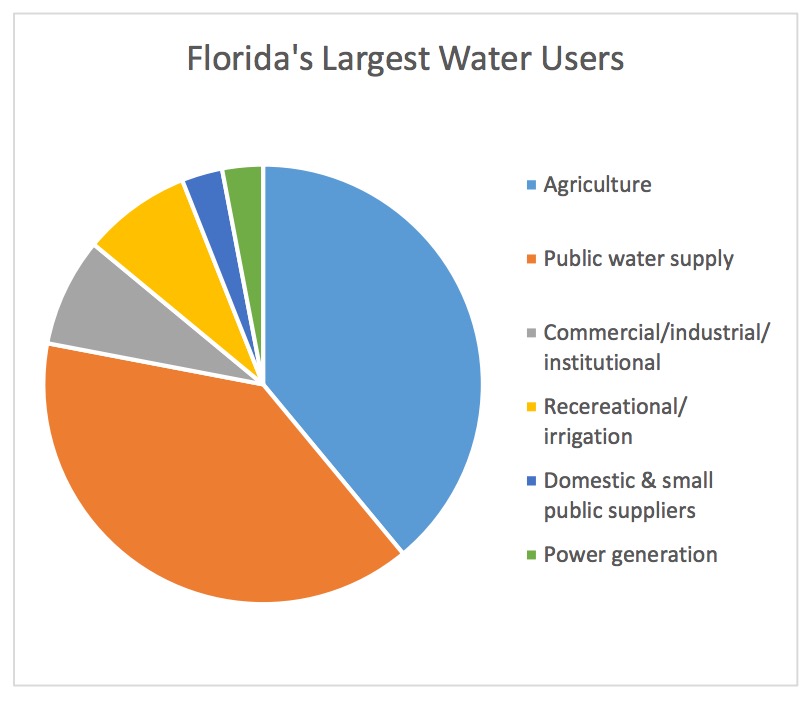AMERICAN SOCIETY OF CIVIL ENGINEERS (ASCE)
FLORIDA SECTION
Aviation
B-
What You Should Know About Florida’s Airports
In addition to the over 50 million visitors arriving by air, Florida’s large size makes aviation a vital mode of transportation for resident travel to the far reaches of the state.
Florida has formed the Continuing Florida Aviation System Planning Process (CFASSP) which is a method used to continually monitor the aviation environment and determine the development requirements to best meet projected aviation demands. This process is a component of the Federal Aviation Administration Continuous Airport Systems Planning Process.
…
Bridges
B
What You Should Know about Florida’s Bridges
FDOT has 12,046 structures in its bridge management system; these include conventional bridges and also culverts (spanning over 20 feet). About 15% of Florida’s bridges are at least 50 years old. The FDOT is responsible for the maintenance of 6,753 (56%) of the bridges; County governments maintain 3,860 (32%); and cities and towns maintain 1,221 bridges (10%), while others (railroad, parks, etc.) maintain the remaining 212 bridges. FDOT has the responsibility of inspecting and rating most of the bridges in Florida. Currently, Florida has 202 structurally deficient bridges (1.7%), over half of which the counties have ownership and maintenance responsibility. Also, about 8.5% of Florida bridges were either weight posted or closed as of January 2015.
…
Coastal Areas
D+
What You Should Know about Florida’s Coastal Areas
 Florida’s economy relies heavily on its beaches, the state’s “invisible” coastal infrastructure that protects Florida’s communities. Most of the public view beaches as places where they can participate in outdoor recreational activities. Florida beaches represent its leading tourist destination with about 810 million “day visits” to its beaches annually. This number more than double the number of “day visits” made annually to all U.S. National Parks combined. Notably, net tourism benefits equated to about $25 billion in 2012. However, beaches also provide another significant benefit — reduction of storm damage to coastal infrastructure and communities — which often goes unnoticed by the beach-going public. As recently shown along well-managed beaches in New Jersey after Hurricane Sandy, the beach and dune systems serve as natural barriers to protect upland properties from damage by dampening the effects of large waves and increased water levels through erosion. In Florida, beaches also contribute to the environment by, for example, providing nesting habitat for the threatened Loggerhead sea turtles, which nest in some of the highest densities in the world. Unfortunately, erosion caused by human activities (such as navigation inlets and coastal development) and natural changes threaten Florida’s coastal areas. Of the 825 miles of sandy shoreline, the distance from New York City to Jacksonville, FL, the state designates nearly 50% as critical erosion areas. Furthermore, more than 500 miles (about 61%) of Florida’s sandy beaches are eroding. Ameliorating this erosion requires managing sediments “in a manner that maximizes natural and economic efficiencies to contribute to sustainable water resource projects, environments, and communities.” Many agencies are currently emphasizing “living shorelines,” natural or nature-based structures (such as oyster shell breakwaters) designed to protect property from extreme storms and flooding over hard protection measures (such as seawalls). In Florida, these efforts have generally limited themselves to individual property owners located on inland waterways. The state of Florida and the U.S. Army Corps of Engineers (USACE) experience shows the most cost-effective, socially and environmentally suitable way to reduce storm damages and coastal flooding on most open coast sites occurs through beach nourishment.
Florida’s economy relies heavily on its beaches, the state’s “invisible” coastal infrastructure that protects Florida’s communities. Most of the public view beaches as places where they can participate in outdoor recreational activities. Florida beaches represent its leading tourist destination with about 810 million “day visits” to its beaches annually. This number more than double the number of “day visits” made annually to all U.S. National Parks combined. Notably, net tourism benefits equated to about $25 billion in 2012. However, beaches also provide another significant benefit — reduction of storm damage to coastal infrastructure and communities — which often goes unnoticed by the beach-going public. As recently shown along well-managed beaches in New Jersey after Hurricane Sandy, the beach and dune systems serve as natural barriers to protect upland properties from damage by dampening the effects of large waves and increased water levels through erosion. In Florida, beaches also contribute to the environment by, for example, providing nesting habitat for the threatened Loggerhead sea turtles, which nest in some of the highest densities in the world. Unfortunately, erosion caused by human activities (such as navigation inlets and coastal development) and natural changes threaten Florida’s coastal areas. Of the 825 miles of sandy shoreline, the distance from New York City to Jacksonville, FL, the state designates nearly 50% as critical erosion areas. Furthermore, more than 500 miles (about 61%) of Florida’s sandy beaches are eroding. Ameliorating this erosion requires managing sediments “in a manner that maximizes natural and economic efficiencies to contribute to sustainable water resource projects, environments, and communities.” Many agencies are currently emphasizing “living shorelines,” natural or nature-based structures (such as oyster shell breakwaters) designed to protect property from extreme storms and flooding over hard protection measures (such as seawalls). In Florida, these efforts have generally limited themselves to individual property owners located on inland waterways. The state of Florida and the U.S. Army Corps of Engineers (USACE) experience shows the most cost-effective, socially and environmentally suitable way to reduce storm damages and coastal flooding on most open coast sites occurs through beach nourishment.
…
Drinking Water
C+
What You Should Know about Florida’s Drinking Water
 The Florida Department of Environmental Protection (FDEP) currently regulates the operation of 5,275 active public and private drinking (potable) water treatment systems in Florida, which serve the state’s estimated population of 20.2 million people. Aquifers are the primary source of freshwater for these drinking water treatment systems. According to FDEP, “90% of this state’s [Florida’s] population relies on these ground water resources [aquifers] for their drinking water. Additionally, over 50% of all other water needs including agricultural, industry, mining and electric power generation are supplied by ground water resources. Ground water also serves as the source for Florida’s many springs and provides a significant input to many of Florida’s lakes and rivers.”
The Florida Department of Environmental Protection (FDEP) currently regulates the operation of 5,275 active public and private drinking (potable) water treatment systems in Florida, which serve the state’s estimated population of 20.2 million people. Aquifers are the primary source of freshwater for these drinking water treatment systems. According to FDEP, “90% of this state’s [Florida’s] population relies on these ground water resources [aquifers] for their drinking water. Additionally, over 50% of all other water needs including agricultural, industry, mining and electric power generation are supplied by ground water resources. Ground water also serves as the source for Florida’s many springs and provides a significant input to many of Florida’s lakes and rivers.”
According to FDEP’s 2014 Annual Report on Regional Water Supply Planning, the state’s 2010 average daily freshwater water demand (which includes drinking/potable water) was estimated to be 6.4 billion gallons per day. High population growth, aging infrastructure, and sensitive ecological environments such as Florida’s Everglades are increasing the need and urgency to invest in Florida’s water infrastructure.
Currently, the largest users of freshwater in Florida are agriculture and public water supply (about 39% each), which are followed by commercial/industrial/institutional (8%), recreational/ irrigation (8%), domestic and small public supply (3%) and power generation (3%).
…
Energy
C-
What You Should Know about Florida’s Energy Infrastructure
The new grade given for Florida’s Energy infrastructure is primarily attributed to three areas; consumption per capita, production, and pricing. Florida’s consumption per capita is 66% of the national average and the ranking went from 43rd to 46th nationally indicating that the consumers are becoming more efficient. Carbon Dioxide emissions from the states’ production facilities have decreased moving Florida from the 4th largest contributor to the 6th largest contributor. Lastly pricing of electricity has improved taking Florida to the lower 50% percentile of states across the country.
Florida is a unique state when it comes to energy. Florida ranks top 5 in total energy consumption, this is primarily due to the hot and humid climate and large tourism industry. The state’s large population improves the energy consumption per capita rankings. Florida has been making significant improvements in conservation and energy incentives, which has slowed the demand growth rate since 2008.
Florida’s energy production is far less than its energy demand; this requires the total production to be supplemented with out-of-state energy. The production of energy primarily comes from electrical generation with most fuels imported. The electricity production was dominated by natural gas followed by coal, nuclear and other renewable fuels. Floridians pay more than the national average for natural gas; however, they pay less than the national average for electricity. Florida has significantly increased its energy incentive programs five-fold since 2012. Some of the energy incentive programs included rebate programs for customers who improve efficiency of buildings and equipment, load management, and for distributed energy resources.
Download full version (PDF): 2016 Report Card for Florida’s Infrastructure
About the American Society of Civil Engineers, Florida Section
www.fla-asce.org
The mission of the Florida Section of the American Society of Civil Engineers is to advance professional knowledge and improve the practice of civil engineering. Today’s civil engineer uses every advantage to meet the demands of their profession.American Society of Civil Engineers pioneers new programs, policies, educational activities, and professional resources to help engineers successfully compete in their business. That’s why today’s civil engineer has a home at the Florida Section ASCE.
Tags: American Society of Civil Engineers, ASCE, FL, Florida, Infrastructure Report Card, Report Card






 RSS Feed
RSS Feed